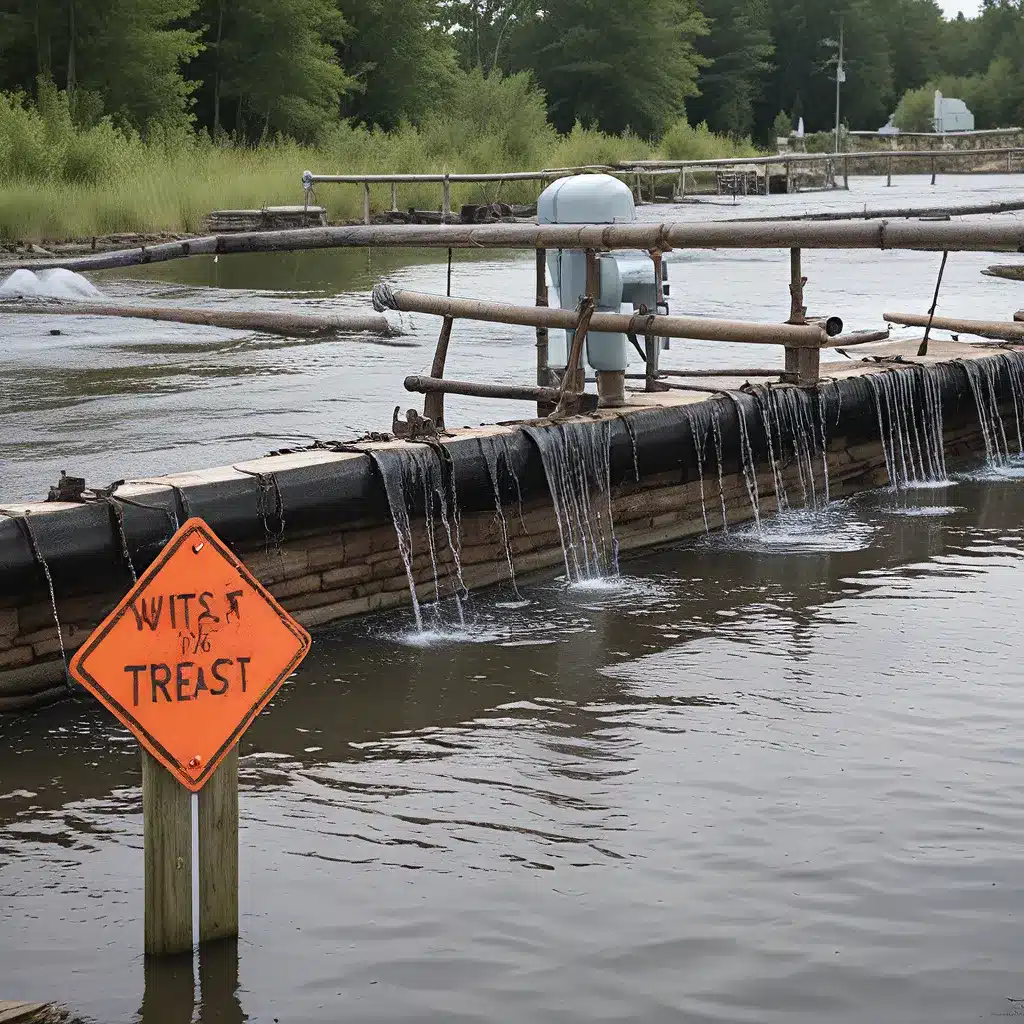
Mastering the Art of Crisis Management
As a water treatment professional, you’re no stranger to the unexpected. When a crisis strikes, your ability to think on your feet and respond effectively can make all the difference. Whether it’s a natural disaster, a facility malfunction, or a public health emergency, the stakes are high, and the pressure is on.
But here’s the good news: with the right strategies and a cool head, you can turn chaos into calm. In this comprehensive guide, we’ll explore the key principles and practical techniques that will empower you to navigate even the most daunting water treatment challenges.
Understanding the Psychology of Crisis
One of the most important things to recognize is that a crisis can have a profound impact on the human psyche. When faced with a high-stakes situation, our bodies and minds often go into overdrive, triggering a cascade of physiological and emotional responses.
Studies show that during a crisis, our stress hormones spike, our heart rates accelerate, and our cognitive abilities can become impaired. We may experience heightened anxiety, panic, or even dissociation as our brains struggle to process the overwhelming stimuli.
Importantly, these reactions are not just limited to the individuals directly affected by the crisis. Even members of the water treatment team can be susceptible to the psychological ripple effects, which can compromise their decision-making and problem-solving abilities if left unchecked.
Cultivating Emotional Resilience
The key to navigating these psychological challenges lies in developing emotional resilience – the ability to adapt and thrive in the face of adversity. This starts with fostering self-awareness and emotional intelligence within your team.
Encourage your colleagues to practice mindfulness techniques, such as deep breathing exercises or guided meditation. These practices can help them become more attuned to their own internal states, allowing them to better regulate their emotions and remain grounded during a crisis.
Additionally, prioritize team-building and supportive communication. Create an environment where team members feel comfortable expressing their concerns, sharing their experiences, and offering each other empathy and validation. This sense of camaraderie and mutual understanding can be a powerful bulwark against the isolating effects of a crisis.
Mastering the Art of Situational Assessment
Of course, emotional resilience is only one piece of the puzzle. Effective crisis management also requires a systematic approach to assessing and responding to the situation at hand.
Begin by gathering as much information as possible. Activate your emergency protocols, communicate with relevant authorities and stakeholders, and continuously monitor the evolving situation. Resist the temptation to jump to conclusions or make hasty decisions based on partial information.
Instead, take the time to carefully analyze the data, identifying the key risks, vulnerabilities, and potential cascading effects. This holistic understanding will be crucial in developing a comprehensive action plan that addresses the immediate needs while also anticipating and mitigating future challenges.
Developing Agile Response Strategies
With a clear understanding of the crisis at hand, you can start to formulate your response strategies. Remember, flexibility and adaptability are key – a one-size-fits-all approach simply won’t cut it in the face of unpredictable and rapidly changing circumstances.
Embrace the concept of “Plan A, Plan B, and Plan C.” Develop multiple contingency plans that can be readily implemented as the situation evolves. This might involve pre-identifying alternative water sources, pre-positioning emergency equipment, or having a roster of qualified personnel on standby.
Equally important is the ability to make quick, informed decisions under pressure. Empower your team members to take initiative and exercise their own problem-solving skills, while providing the necessary guidance and support. Foster a culture of collaboration, where information and ideas flow freely, and everyone feels empowered to contribute.
Maintaining Effective Communication
Communication is the lifeblood of crisis management, both internally and externally. Establish clear and transparent channels of communication with your team, regulatory agencies, community stakeholders, and the general public.
Develop a consistent messaging strategy that conveys the gravity of the situation while also projecting a sense of confidence and control. Avoid ambiguity or mixed signals, and be prepared to address questions and concerns head-on.
Remember, effective communication is a two-way street. Be an active listener, encouraging feedback and input from all stakeholders. This will not only help you gather valuable insights, but it will also foster a sense of trust and collaboration that can be crucial in navigating the crisis.
Leveraging Technological Innovations
In today’s digital age, technology can be a powerful ally in crisis management. Embrace the use of real-time monitoring systems, predictive analytics, and remote sensing capabilities to enhance your situational awareness and decision-making.
Inland Waters, for example, offers a range of innovative water treatment solutions that can help you stay one step ahead of emergencies. From advanced filtration systems to integrated control and monitoring technologies, these cutting-edge tools can provide the critical data and functionality you need to respond effectively.
Fostering a Culture of Continuous Improvement
Finally, it’s essential to view crisis management as an ongoing, iterative process, not a one-time event. Regularly review your emergency protocols, assess the effectiveness of your responses, and identify areas for improvement.
Encourage your team to share their experiences, lessons learned, and best practices. Incorporate this feedback into your training programs and emergency planning initiatives, ensuring that your organization is constantly evolving and adapting to meet the ever-changing demands of the water treatment landscape.
By embracing this culture of continuous improvement, you’ll not only be better prepared to handle future crises, but you’ll also cultivate a workforce that is resilient, adaptable, and empowered to turn even the most daunting challenges into opportunities for growth and innovation.
In the high-stakes world of water treatment, mastering the art of crisis management is not just a nice-to-have – it’s a necessity. By applying the strategies and principles outlined in this guide, you’ll be well on your way to transforming chaos into calm, ensuring that your organization and the communities you serve can weather any storm.


